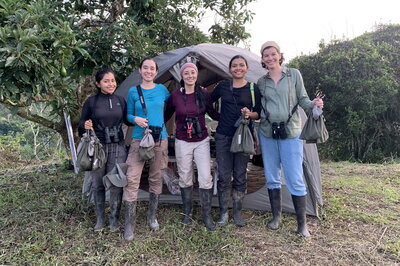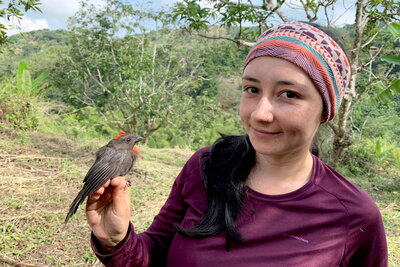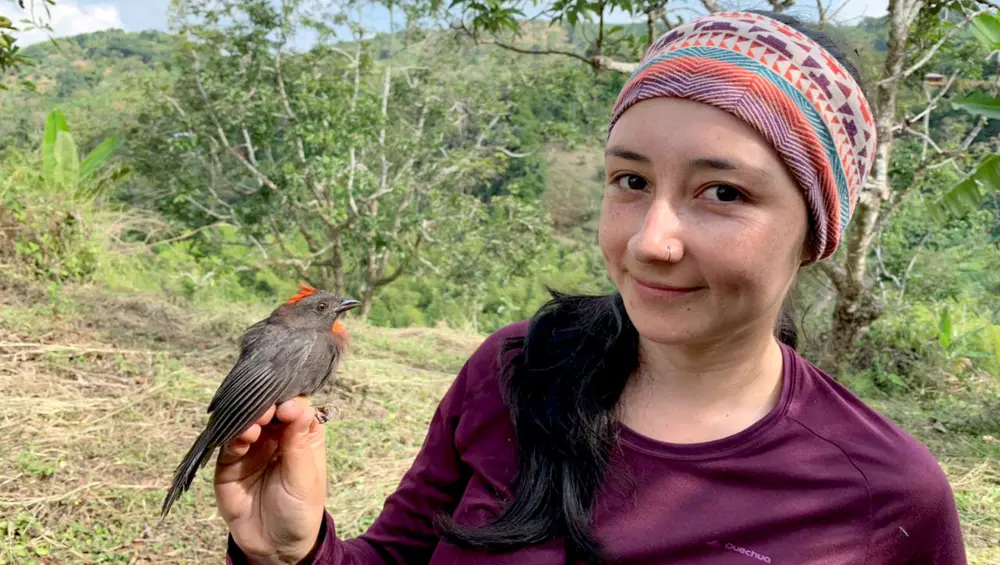
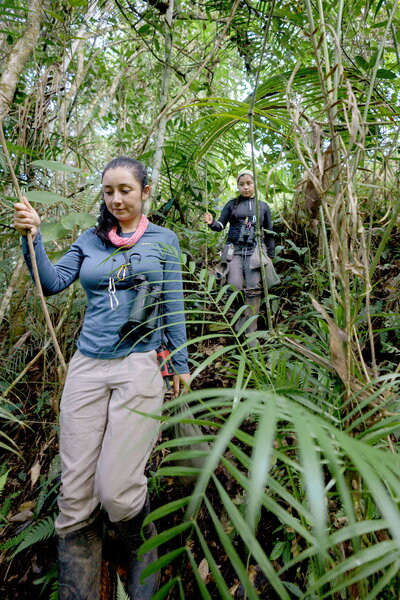
I am walking in a forest and listening to a concert of birdsong at dawn. I pick one song out of the chorus – a fast chatter full of melodious whistles – the sound of the sooty ant tanager.
“Today, we will probably get to know this bird up close,” I think.
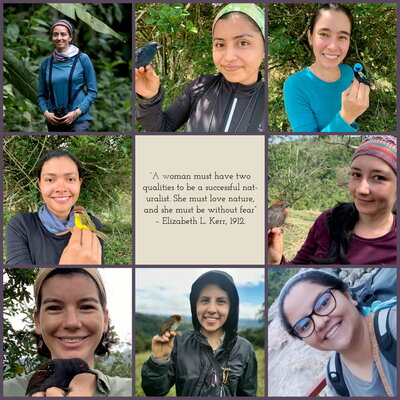
My colleagues and I set up and open our mist nets. Now we are ready to document and study the avian wonders of this corner of the world. We hike up to our base camp, where a room-sized tent in a flat area at the top of a hill serves as our meeting place and field laboratory.
Today marks the beginning of our expedition to the Central Andes of Colombia. All eight of us are women. We are all Colombian ornithologists working together to survey the birds here. Interestingly, we are not the first women to do this.
In the early 20th century, North American naturalists documented Colombia’s remarkable avifauna from more than 70 localities throughout the country. Now, a little more than 100 years later, we are revisiting some of those localities to study the bird life, tracking its changes through time, and the history of those earlier expeditions as part of the Colombia Resurvey Project. As we navigate through the country’s landscapes, the birds become our guides, revealing glimpses of the country’s rich history.

When preparing for this expedition, I discovered that Elizabeth Kerr, a naturalist and collector, had visited Colombia in the early 20th century and contributed significantly to the knowledge of birds and mammals from this part of the world. She worked, mostly alone, at a time when women had very limited access to education and scientific expeditions. For me and my female colleagues in ornithology, the discovery meant a lot. Kerr’s contributions had been lost, forgotten, hidden in history. Today, our team of female ornithologists is reviving her memory by following in her footsteps.
